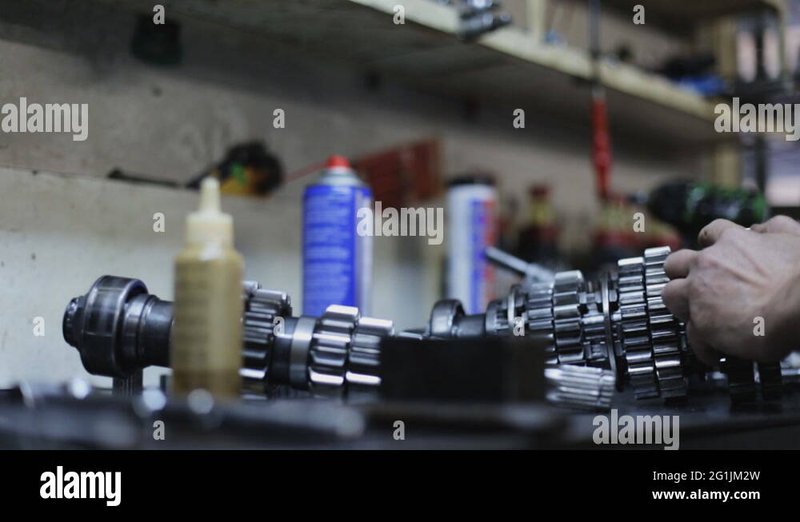
Here’s the thing: lubricating the latch is a bit like oiling a bike chain or WD-40-ing a squeaky hinge. It keeps every part moving smoothly, prevents frustrating lockouts, and can even extend the life of your handleset. Even if the brand or style of your exterior handleset is different from your neighbor’s, the steps and reasons stay much the same. Whether you’re dealing with an old-school keyed entry or a modern electronic keypad, knowing how to lubricate the latch mechanism is a basic bit of home maintenance that pays off every time you open your door.
Why Lubricating the Latch Mechanism Matters
Most people don’t think about their door latch until it starts acting up. But honestly, a dry or sticky latch can become a real headache fast. Over time, dust, moisture, and little bits of grit sneak their way into the latch housing. That buildup can slow down the moving parts, making the latch stick, drag, or even fail to retract.
If you ignore these warning signs, you might end up with a lock that jams shut—or worse, a door that refuses to lock at all. This isn’t just annoying; it’s a security risk too! A gummed-up latch can also put more strain on your key or electronic lock, wearing both down more quickly.
Let me explain why this is especially important for exterior handlesets. Doors that face the elements are constantly exposed to changes in humidity, rain, snow, and temperature swings. That’s a recipe for sticky or sluggish latches, especially on popular brands like Schlage, Kwikset, or Emtek. A simple, regular lubrication routine helps keep your home secure, your lock feeling smooth, and your door handle lasting longer.
Signs Your Exterior Handleset Latch Needs Lubrication
You might be wondering, “How do I even know if my latch needs lubricating?” Good question. Typically, there are some clear warning signs that something’s not quite right. Ignoring these can turn a simple fix into a bigger repair down the road.
- Sticking or jamming: If you have to wiggle or force the handle for the latch to retract, it’s time for lubrication.
- Squeaking or grinding noises: A healthy latch should operate quietly. If you hear squeaks, creaks, or scraping, that’s friction at work—and friction means trouble.
- Slow movement: If the latch retracts or pops out sluggishly after you release the handle, it’s probably gummed up inside.
- Difficulty locking or unlocking: Sometimes, a stuck latch can make it hard to sync your key or electronic code with the mechanism.
Of course, if you can see visible dirt or corrosion around the latch, don’t wait. A quick clean and lube can restore it fast. Ignoring these signs usually means more wear and tear, maybe even needing to replace the handleset if things get bad enough.
Choosing the Right Lubricant for Your Door Latch
Honestly, not all lubricants are created equal—especially for exterior handlesets. You can rule out heavy greases and motor oil right away; they collect dirt and turn sticky. Instead, focus on lubricants made for metal locks and moving door hardware.
Your best bets are:
- Dry graphite powder: This is a favorite for locksmiths. It doesn’t attract dust, and it works well in most climates.
- Silicone-based sprays: Unlike WD-40 (which is better for hinges), silicone sprays don’t gum up or leave residue on your lock’s inner parts.
- Specialty lock lubricants: Products like Tri-Flow or Teflon-based sprays are made for jobs like this. They repel moisture and keep things moving without catching dirt.
Avoid oil-based lubricants around your latch, unless you’re in a pinch and plan to clean it soon after. Oil can attract dust, turning into a sticky mess inside your handleset over time. For brands like Schlage or Kwikset, a dry or Teflon spray is almost always the safest bet.
Step-By-Step: How to Lubricate Your Exterior Handleset Latch
Let’s break down the process so it’s easy to follow, even if you’ve never opened up a lock before. Don’t worry—this isn’t a code-resetting job or anything high-tech. It’s basic, hands-on home maintenance.
What You’ll Need
- Lock-safe lubricant (graphite, silicone spray, or Teflon-based spray)
- Clean rag or paper towels
- Small brush (an old toothbrush works)
- Phillips or flat-head screwdriver (only if you need to remove the handleplate)
- Optional: compressed air can
Lubrication Steps
- Open the door so you have clear access to the latch edge.
- Wipe away visible dirt around the latch bolt using a rag. If you see built-up grime, use a brush or compressed air.
- Apply the lubricant directly to the latch bolt and into the small gap around it. If you’re using a spray, aim the nozzle into the gap while moving the handle to help the lubricant work in.
- Move the handle up and down a few times to work the lubricant through the mechanism. Listen and feel for smoother movement.
- Wipe off any excess lube from the latch and surrounding area. Too much can drip down and attract dust.
- Test the lock by opening and closing the door several times, making sure everything is moving smoothly and syncing with your key or code.
You don’t usually need to disassemble the entire handleset. Brands like Kwikset and Yale design their locks so you can lubricate without removing the lock body. Only take things apart if the latch is seriously stuck or if you need to troubleshoot deeper problems.
What If Lubricating Doesn’t Fix the Problem?
Okay, so you’ve followed the steps and things are still stuck or scraping? Don’t panic—there are a few things to try before calling in backup.
First, check for visible damage. Exterior handlesets, especially older models, can get bent out of shape from repeated slamming or forced entry attempts. If you notice warping or a broken spring inside the latch, lubrication alone won’t help.
Next, look for misalignment. If your door has sagged or warped from weather, it might not be lining up with the latch plate. This can make it impossible for the latch to retract properly, no matter how much you lubricate. Adjusting the strike plate, tightening hinge screws, or even resetting the door frame might solve it.
Sometimes, the problem isn’t mechanical—it’s the code or battery if you’ve got a coded or electronic handleset. A weak battery can slow down or confuse the locking mechanism, especially when it’s trying to pair the code input with the latch action. Swapping in a fresh battery might save you from a more expensive repair.
If all else fails, the latch may just be worn out. Handleset latches can only take so much abuse before they need to be replaced. Thankfully, universal latch kits are available for most major brands and can be installed with standard tools.
How Often Should You Lubricate Your Handleset Latch?
You might be wondering, “How often do I need to do this?” The truth is, it depends on your climate and how much use your door gets. For most homes, lubricating the exterior handleset latch once or twice a year is plenty.
If your door faces heavy rain, snow, or is exposed to road dust, you might want to increase it to every three to six months. Don’t wait until you hear squeaking or feel resistance—regular maintenance will keep things working smoothly and avoid bigger issues.
If you’ve just installed a new coded or keyed handleset, give it a baseline lubrication before winter and again in the spring. That way, you’ll spot early signs of trouble and keep your lock’s code and mechanical parts working in sync.
Alternatives and Extra Tips for Stubborn Latches
Sometimes, no matter what you do, a latch stays stubborn. In these cases, there are alternatives and pro-tips that can help.
- Try a universal replacement latch: If your handleset is from a major brand, universal latches are sold at hardware stores and can be swapped in pretty quickly. This is quicker than buying a whole new handleset and works for most models.
- Clean deeper if needed: For badly jammed latches, you might need to remove the handleset and do a thorough cleaning and lubrication. Take pictures as you go so you can reassemble without confusion.
- Check for manufacturer instructions: Some brands, especially smart locks, recommend specific lubricants or include troubleshooting steps for syncing electronic and mechanical parts.
- Don’t force a stuck latch: Forcing things can break internal springs or damage the latch code mechanism. Always start gentle and troubleshoot slowly.
If you’re not comfortable taking apart your lock, there’s no shame in calling a locksmith. Sometimes getting professional help saves more time, money, and stress than powering through a stubborn fix on your own.
Final Thoughts: Keep Your Handleset Moving Smoothly
Lubricating the latch mechanism of your exterior handleset isn’t just about silencing annoying squeaks—it’s about keeping your home secure and your lock reliable. With a little attention and the right product, your Schlage, Kwikset, Yale, or Emtek handleset will work like new, whether you use a classic key or punch in a code. Remember: a few minutes of easy maintenance can save you from a jammed door or costly repairs down the line. Honestly, it’s one of those simple home tasks that pays off every time you turn your handle.
